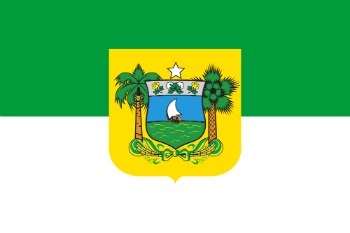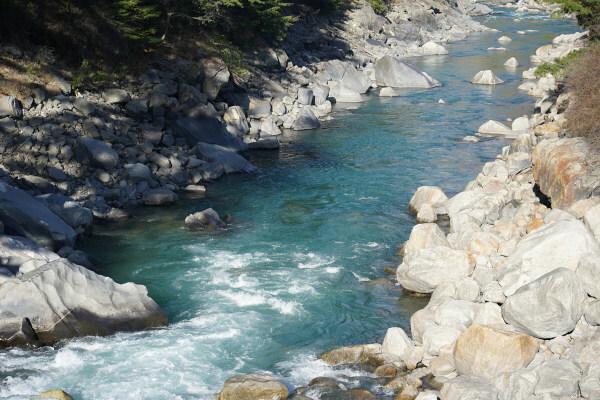The State of Rio Grande do Norte is located in the Northeast region of Brazil. The capital is Natal and the acronym RN.
- Area: 52,811,126
- Limits: Rio Grande do Norte is limited to the west by Ceará, to the south by Paraíba and east by the Atlantic Ocean
- Number of municipalities: 167
- Population: 3.4 million inhabitants is IBGE's estimate for 2015
- Gentile: who is born in Rio Grande do Norte is Potiguar (shrimp eater in Tupi)
- Main city: Natal
 Flag of the State of Rio Grande do Norte
Flag of the State of Rio Grande do Norte
History
The territory that today corresponds to the State of Rio Grande do Norte was the target of disputes with the French, who invaded the region in 1535. Only at the end of the 16th century, Portuguese colonizers began to occupy the region, due to the expulsion of invaders from France.
After the victory, in 1598, a fortress was built, called Fortaleza dos Reis Magos. The purpose of the construction was to establish a defense point for the possessions of the Portuguese Crown. This point originated the city of Natal.
From 1633, the region was occupied by the Dutch, who remained in the area for two decades.
The Dutch had the support of the indigenous people and developed various activities, such as the exploration of salt, cattle raising and the planting of sugar cane. In 1654, the invaders were expelled and there was resistance from the indigenous people.
The natives rebelled and did not accept the slavery regime to which they were subjected by the colonizers. The rebellion, called the Confederation of Cariris, lasted until the end of the 17th century.
better understand, read: Indigenous slavery in Brazil.
The region that corresponded to the Captaincy of Rio Grande do Norte was transferred to the captaincy of Pernambuco in 1701.
The subordinate state lasted until 1824, when the state was elevated to the category of province. The political-geographic designation of state occurred in 1889, with the Proclamation of the Republic.
Complete your research:
- Northeast States
- Northeast region
- Brazil states
- Acronyms of Brazilian States
Culture
The main legacy of Portuguese craftsmanship in the potiguar culture is bobbin lace. Braided into small pillows, the laces originate unique pieces that directly refer to the region.
Typical foods
Portuguese and indigenous mix in the typical flavors of Rio Grande do Norte. The best known dish in the region is carne de sol with cassava.
The crab cooked in coconut milk and tapioca is also outstanding. The fruits of the region have a special flavor, which are served with curd cheese or butter. This is how coconut, papaya, jackfruit, cashew and guava are presented.
Tourism
Tourism is the main driver of the Potiguar economy. The activity generates 100,000 direct jobs and influences the ordering of another 54 points in the production chain. The region has 400 km of coastline, offering beaches, as well as dunes and caves.
The Estrela Fort, founded on December 25, 1599, is an imposing construction that concentrates intense tourist activity.
The historical heritage and natural beauty receive the increase of typical festivities and gastronomic festivals.
Read too:Northeast culture, Northeast Region Economy.
geographic features
Rio Grande do Norte is located on a long stretch of plateau to the north. There are isolated massifs in the southern and western regions.
There are seven distinct zones in the state, the salineira, the coast, the agreste, the center-north, the seridó, the Apodi plateau and the Serrana.
Climate
The climate is semi-arid in most of the state. The temperature varies between 20º C and 27º C throughout the year. It is one of the driest areas in the country.
Hydrography
Among the characteristics of the hydrography of Rio Grande do Norte is the presence of temporary rivers. This is due to lack of rainfall.
The most important rivers are the Mossoró, Apodi Assu, Piranhas, Potengui, Trairi, Jundiaí, Jacu, Seridó and Curimataú.
know more:
- Northeast Region Climate
- drought in the northeast
- semiarid climate
- Types of Climate
Curiosities
Rio Grande do Norte was chosen several times as the seat of military experiences, mainly by the Navy. The choice results from the privileged geographic position, being the coast closest to Europe;
During the Second World War, the US government built the "Bridge from the Atlantic to Africa" in the region.
Learn more about the northeast region:

